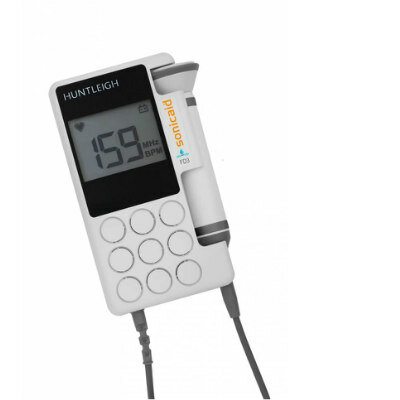AI in Radiology Market Driven by Growing Adoption of Machine Learning Tools in Broad Spectrum of Imaging Applications
|
By MedImaging International staff writers Posted on 10 Nov 2021 |

Artificial intelligence (AI) tools and technologies have been making enormous impacts on various aspects of healthcare. The use of AI algorithms in medical image analysis field has made astounding progress. Particularly deep learning has made incessant inroads in radiology practice. The major consumer proposition for companies in the AI in radiology market stems from the exceptional capabilities of AI tools in recognizing complex patterns in the imaging data.
These are the latest findings of Transparency Market Research (Albany NY, USA), a next-generation market intelligence provider.
The exponential rise of clinical, molecular, imaging, and genomic data has extended the canvas for the need for utilization of advanced IT and data processing tools for assessments of radiographic characteristics, and enrich the work of radiologists. As a result, radiomics has made striking strides in recent years. The utilization of AI in radiology continues to expand, as is evident in the rise in the growing adoption of machine learning tools in broad spectrum of imaging applications, driving the AI in radiology market. Some of the key applications of AI in imaging are risk assessment, diagnosis, identification, prognosis, evaluation of risk of reoccurrence, and therapy response. Several clinically useful AI tools have been developed to meet these applications in AI in radiology market.
One of the key areas with massive potential revenues is oncology. Specifically, AI algorithms are used in a number of thoracic imaging tasks including such as lung nodules assessment for identifying whether these are benign or malignant, pneumonia detection, or estimation of diffuse lung diseases. The past few years have seen rapid technological advancements in deep learning, raising the standard of AI, which has expanded the horizon of the AI in radiology market. A number of anomalies have been found to open to detection for radiologists. Deep learning integrated with magnetic resonance imaging (MRI) has been found to make time-based assessment of the histological analysis of breast cancer. Images from other modalities are also open to a reliable scrutiny by AI methods; examples are computed tomography (CT) and positron emission tomography (PET). A case in point is the growing clinical potential of use of ML tools in pancreatic cancer analysis in CT and MRI.
Some of the end-use areas in the AI in radiology market are abdominal and pelvic imaging, colonoscopy, mammography, and brain imaging. The areas of applications continue to expand with the growing awareness about the unique capabilities of AI in radiomics. A case in point is the emerging prospects in chest computed radiography. The use cases of AI in DNA and RNA sequencing is anticipated to unlock an incredible avenue for players in the AI in the radiology market. AI tools have become a friend for radiologists, and in the near future will increasingly complement diagnosis and clinical care.
Players in the AI in radiology market are constantly striving to offer solutions that bridge the gap between training and applications in real-world populations. Hospitals also simultaneously need to upskill their healthcare staff in using complex AI systems. In effect, this is one of the key focus areas for AI tools developers in the AI in radiology market to reduce the chances of errors and prevent algorithmic biases. Another area that is replete with opportunities is ethical aspects of AI. Human designers and operators should work collaboratively to develop next-gen AI for radiology applications. The aspect should be at the crux of new product development, opines experts, and the factor will also massively shape the competitive dynamics of the AI in radiology market.
Geographically, North America is a highly lucrative AI in radiology market. Its growth has been fueled by massive advancements in deep learning tools. The healthcare industry has been increasingly benefitted from the growing practical implications of AI in radiomics. Asia Pacific is being viewed as an emerging AI in radiology market in recent years. The growing technical expertise of leveraging AI for patient well-being will propel the growth of this regional market, going forward.
Related Links:
Transparency Market Research
Latest Industry News News
- Bayer and Google Partner on New AI Product for Radiologists
- Samsung and Bracco Enter Into New Diagnostic Ultrasound Technology Agreement
- IBA Acquires Radcal to Expand Medical Imaging Quality Assurance Offering
- International Societies Suggest Key Considerations for AI Radiology Tools
- Samsung's X-Ray Devices to Be Powered by Lunit AI Solutions for Advanced Chest Screening
- Canon Medical and Olympus Collaborate on Endoscopic Ultrasound Systems
- GE HealthCare Acquires AI Imaging Analysis Company MIM Software
- First Ever International Criteria Lays Foundation for Improved Diagnostic Imaging of Brain Tumors
- RSNA Unveils 10 Most Cited Radiology Studies of 2023
- RSNA 2023 Technical Exhibits to Offer Innovations in AI, 3D Printing and More
- AI Medical Imaging Products to Increase Five-Fold by 2035, Finds Study
- RSNA 2023 Technical Exhibits to Highlight Latest Medical Imaging Innovations
- AI-Powered Technologies to Aid Interpretation of X-Ray and MRI Images for Improved Disease Diagnosis
- Hologic and Bayer Partner to Improve Mammography Imaging
- Global Fixed and Mobile C-Arms Market Driven by Increasing Surgical Procedures
- Global Contrast Enhanced Ultrasound Market Driven by Demand for Early Detection of Chronic Diseases
Channels
Radiography
view channel
Novel Breast Imaging System Proves As Effective As Mammography
Breast cancer remains the most frequently diagnosed cancer among women. It is projected that one in eight women will be diagnosed with breast cancer during her lifetime, and one in 42 women who turn 50... Read more
AI Assistance Improves Breast-Cancer Screening by Reducing False Positives
Radiologists typically detect one case of cancer for every 200 mammograms reviewed. However, these evaluations often result in false positives, leading to unnecessary patient recalls for additional testing,... Read moreMRI
view channel
PET/MRI Improves Diagnostic Accuracy for Prostate Cancer Patients
The Prostate Imaging Reporting and Data System (PI-RADS) is a five-point scale to assess potential prostate cancer in MR images. PI-RADS category 3 which offers an unclear suggestion of clinically significant... Read more
Next Generation MR-Guided Focused Ultrasound Ushers In Future of Incisionless Neurosurgery
Essential tremor, often called familial, idiopathic, or benign tremor, leads to uncontrollable shaking that significantly affects a person’s life. When traditional medications do not alleviate symptoms,... Read more
Two-Part MRI Scan Detects Prostate Cancer More Quickly without Compromising Diagnostic Quality
Prostate cancer ranks as the most prevalent cancer among men. Over the last decade, the introduction of MRI scans has significantly transformed the diagnosis process, marking the most substantial advancement... Read moreUltrasound
view channel
Deep Learning Advances Super-Resolution Ultrasound Imaging
Ultrasound localization microscopy (ULM) is an advanced imaging technique that offers high-resolution visualization of microvascular structures. It employs microbubbles, FDA-approved contrast agents, injected... Read more
Novel Ultrasound-Launched Targeted Nanoparticle Eliminates Biofilm and Bacterial Infection
Biofilms, formed by bacteria aggregating into dense communities for protection against harsh environmental conditions, are a significant contributor to various infectious diseases. Biofilms frequently... Read moreNuclear Medicine
view channel
New SPECT/CT Technique Could Change Imaging Practices and Increase Patient Access
The development of lead-212 (212Pb)-PSMA–based targeted alpha therapy (TAT) is garnering significant interest in treating patients with metastatic castration-resistant prostate cancer. The imaging of 212Pb,... Read moreNew Radiotheranostic System Detects and Treats Ovarian Cancer Noninvasively
Ovarian cancer is the most lethal gynecological cancer, with less than a 30% five-year survival rate for those diagnosed in late stages. Despite surgery and platinum-based chemotherapy being the standard... Read more
AI System Automatically and Reliably Detects Cardiac Amyloidosis Using Scintigraphy Imaging
Cardiac amyloidosis, a condition characterized by the buildup of abnormal protein deposits (amyloids) in the heart muscle, severely affects heart function and can lead to heart failure or death without... Read moreGeneral/Advanced Imaging
view channel
New AI Method Captures Uncertainty in Medical Images
In the field of biomedicine, segmentation is the process of annotating pixels from an important structure in medical images, such as organs or cells. Artificial Intelligence (AI) models are utilized to... Read more.jpg)
CT Coronary Angiography Reduces Need for Invasive Tests to Diagnose Coronary Artery Disease
Coronary artery disease (CAD), one of the leading causes of death worldwide, involves the narrowing of coronary arteries due to atherosclerosis, resulting in insufficient blood flow to the heart muscle.... Read more
Novel Blood Test Could Reduce Need for PET Imaging of Patients with Alzheimer’s
Alzheimer's disease (AD), a condition marked by cognitive decline and the presence of beta-amyloid (Aβ) plaques and neurofibrillary tangles in the brain, poses diagnostic challenges. Amyloid positron emission... Read more.jpg)
CT-Based Deep Learning Algorithm Accurately Differentiates Benign From Malignant Vertebral Fractures
The rise in the aging population is expected to result in a corresponding increase in the prevalence of vertebral fractures which can cause back pain or neurologic compromise, leading to impaired function... Read moreImaging IT
view channel
New Google Cloud Medical Imaging Suite Makes Imaging Healthcare Data More Accessible
Medical imaging is a critical tool used to diagnose patients, and there are billions of medical images scanned globally each year. Imaging data accounts for about 90% of all healthcare data1 and, until... Read more



















